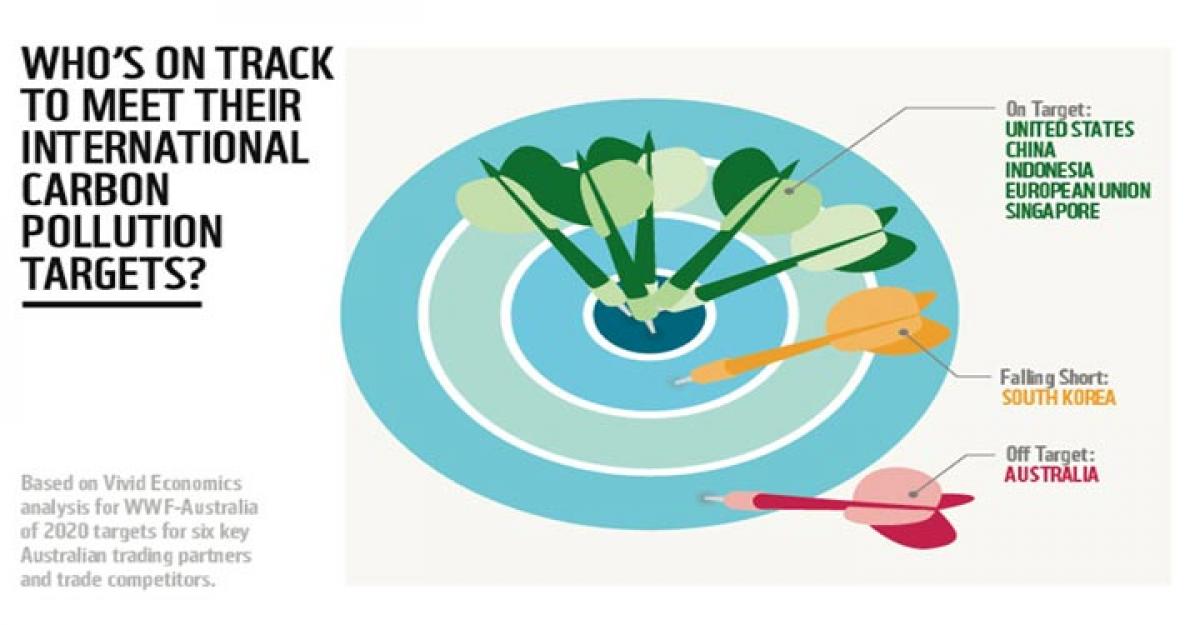Live
- Time to boost measures to prevent drowning, save children: WHO
- TDP achieves milestone with 73 lakhs membership registration, says Chandrababu
- South Korea: Main Oppn hails Yoon's impeachment motion passage as 'victory for people, democracy'
- RG Kar issue: Tension flared over parallel protests by Congress, SUCI(C) outside CBI offices
- After furore, Central Railway revokes order to raze Lord Hanuman Temple at Dadar
- Now hoteliers' body in Bengal's Alipurduar shut doors for Bangladeshi tourists
- District Collector Encourages Students to Utilize Government Facilities for a Better Future
- Per capita availability of fruits, vegetables increases in India
- FII buying reaches Rs 22,765 crore in Dec as economic growth stays resilient
- National Energy Conservation Day 2024: Date, Importance, and Easy Ways to Save Energy
Just In

Climate change has solutions. India\'s announcement that it will cut emissions by 35 percent by 2030 at 2005 levels is certainly a welcome announcement.
India's announcement that it will cut emissions by 35 percent by 2030 at 2005 levels is certainly a welcome announcement. However, the key is to sensitise the international community and get it to help us with technology-transfer and low-cost finance to achieve this ambitious goal. For, we will need at least $2.5 trillion, it not more, to implement all the planned actions.
 Let us also be pre-warned. A ‘business as usual’ approach will take us to an increase in global temperature by 4.5 degrees centigrade by 2100 -- this is unsustainable. Our common goal is to reach a maximum increase of 2 degrees centigrade by then, by limiting our carbon-dioxide emissions.
Let us also be pre-warned. A ‘business as usual’ approach will take us to an increase in global temperature by 4.5 degrees centigrade by 2100 -- this is unsustainable. Our common goal is to reach a maximum increase of 2 degrees centigrade by then, by limiting our carbon-dioxide emissions.
We collectively need to have a strategy and action plan in place to meet this objective. The question is whether the collective submission of Intended Nationally Determined Contributions (INDCs) by 196 members of the United Nations Framework Convention on Climate Change, ahead of the Convention on Climate Change due in Paris from November 30 to December 11, is enough. In a way, our future is in the hands of the leadership of these 196 members.
Even as we race against time to ensure that there will be a far-reaching global agreement on climate change by the time the Paris meet concludes, we have known technologies to be able to reduce our dependence on fossil fuels. The question is our collective determination to find the alternatives and availability of low-cost money to implement them. The fossil-fuel alternative has to become more expensive for the user.
We need to have compulsory water harvesting and ban the production and sale of GLS lamps in India. These are very energy inefficient. Energy efficient systems need a strong promotion through taxation and pricing policy. Why is solar not popular?
Why has drip irrigation not taken off in agriculture? Why can we not price water adequately to conserve it and not give it away free to agriculture -- and now, even to urban dwellers? Our 780 million cows can solve the energy storage issue for India:
- Cow dung can be used to generate "gobar gas" that can further be used for producing electricity using fuel cells.
- The by-product, "natural fertilizer" can be used to promote value added organic produce -- fruits and vegetables, for domestic consumption and exports.
- India can become the organic food basket for the world.
- This gobar gas produced can be directly used in villages for cooking and thereby reduce the health or wellness issues due to pollution.
- Our 300 million people, who have no access to electricity today and are not grid-connected, can have electricity generated by solar panels and wind energy during the day.
- Electricity generated by fuel cells using gobar gas can serve at night -- and even towards education of children and mobile telephone towers, besides general lighting.
- Telephone towers for these 300 million people could be powered by electricity and open up a new market for the telephone companies
Cow dung from 100 cows can produce 30 KVA of electricity. From 780 million cows, we should be able to generate 234 GW at relatively low cost. The key is collection of the cow dung. We already have indigenous technology to grow fresh grass using hydroponics for the cows on the basis of daily demand.
This apart, we should have DC distribution system in these villages and develop LED lamps that run on DC current and also Fans. This, if feasible and implemented, will be a game changer for India's economy and well-being. There is no doubt policies mandating health and wellness at work will benefit the society and environment. (The writer is a trustee of The Climate Reality Project-a Foundation set up by Nobel Laureate, Al Gore-in India).
By Kamal Meattle

© 2024 Hyderabad Media House Limited/The Hans India. All rights reserved. Powered by hocalwire.com







